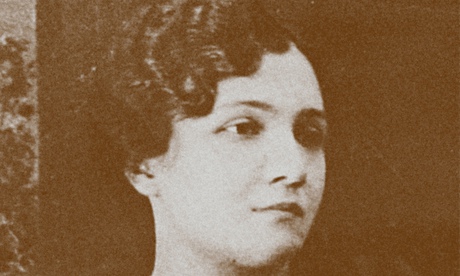
In 1934, Graham Greene spent some time in the Estonian capital of Tallinn “vainly seeking a brothel” that (he records in his memoir Ways of Escape) had been recommended to him by the “very dangerous” Maria Ignatievna Zakrevskaya, later Countess Benckendorff and Baroness Budberg, a Russo-Baltic exile living in London and mistress of, among others, HG Wells and Maxim Gorky. Moura, as she was affectionately known, had misled Greene: the brothel turned out to be an apothecary’s. In 1965, after another disappointment, Greene wrote to Moura at her address in Cromwell Road in London: “My dear Moura, You know that I love you very much, so you must forgive my telling you that you are being a bloody nuisance.”
Moura Budberg is a difficult subject for biographers, not least because she contrived so many elaborate autobiographical fictions. Born in 1892 into an aristocratic Ukrainian family, she had married young to a Baltic German aristocrat, Djon von Benckendorff, who ran an estate in Estonia on the Russian borderlands. During the Bolshevik revolution, Benckendorff died on the estate in murky circumstances. The authors of this enjoyably sensationalist biography of Moura hint that she was complicit in the murder, though no evidence is adduced to support the view. A few years later, in 1921, Moura married another Estonian baron, Nikolai Budberg, by which time both M15 and the Bolsheviks’ secret intelligence service – the Cheka – had opened files on her.
With her unclear political and moral allegiances, Moura Budberg may have acted as a double agent for Great Britain and Bolshevik Russia. With Machiavellian adroitness she infiltrated the Bolshevik top brass in St Petersburg (later Leningrad), while working as a translator in the propaganda office of the British embassy. Tallinn was the Baltic port closest to St Petersburg and known to be a centre for espionage, infiltrated by White Russian intriguers intent on blocking Soviet access to Baltic territories. Graham Greene was not alone in finding Moura (“Bedbug”) Budberg an alluringly ambiguous figure.
Deborah McDonald and Jeremy Dronfield, drawing on previously unseen archive material, establish that Moura was caught up in gold-laundering schemes in 1920s Tallinn. The Baltic city had always been a clearing house and magnet for semi-legal flotations of one stripe or another. White Russian gold was transported to Tallinn from St Petersburg and on to Stockholm, where it was melted down and sold. In the Estonian capital, Moura got to know the Tallinn-based sailing enthusiast, pro-Lenin journalist and author of Swallows and Amazons Arthur Ransome, himself a double-dealing adventurer type. Through her contacts in Russian and Baltic diplomatic circles, Moura Budberg was introduced to Ransome’s friend Robert Bruce Lockhart, the secret agent sent to Moscow as Britain’s first envoy to the Bolsheviks. She and Lockhart fell madly in love, even if (as now seems certain) she was spying on her beloved “Locky” for the Cheka.
By the early 1930s, Moura had moved to London and taken up with HG Wells, who proposed marriage several times, only to be rebuffed. Frustrated, Wells asked her to accompany him to the USSR (in 1934 he interviewed Stalin in the Kremlin) but Moura feared she might be arrested as an enemy of the people. She came from a pro-Tsarist Ukrainian family, after all, and had married two Baltic noblemen. Whose side was she on? Sometimes even the “facts” of her life do not seem to tell the truth. Budberg’s last years were spent in a vodka haze in her Cromwell Road flat, where she entertained Laurence Olivier, Greene, Martha Gellhorn and the Cambridge-educated double agent Guy Burgess.
Though diligently researched, A Very Dangerous Woman contains rather too much Mills & Boon-type scene-setting: “Moura parted the heavy curtain and looked out into the evening dark, moving close to the glass to see through the lamplit reflection of her own glittering eyes.” (Exactly the same sentence is repeated 300 pages later.) Budberg died in Italy in 1974 and was buried in Chiswick, west London, a most remarkable liar and mythomane.
A Very Dangerous Woman is published by Oneworld (£20). Click here to buy it for £16

